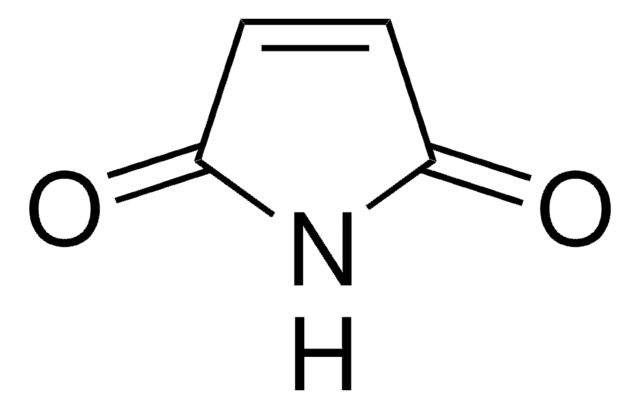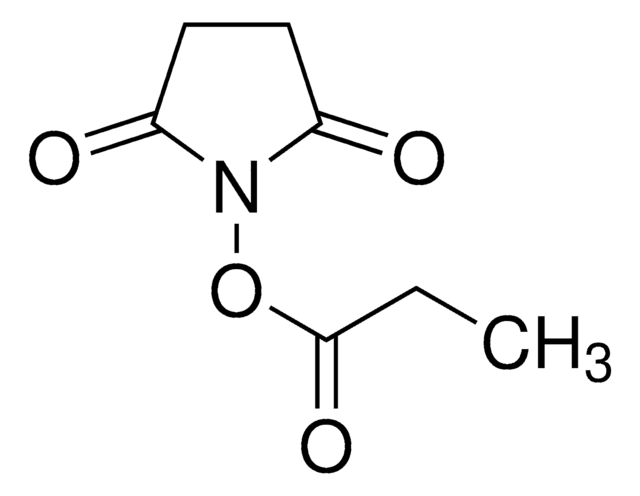Kluczowe dokumenty
B1267
Biotin-maleimide
≥95% (TLC), powder
Synonim(y):
N-Biotinoyl-N′-(6-maleimidohexanoyl)hydrazide
About This Item
Polecane produkty
Próba
≥95% (TLC)
Formularz
powder
rozpuszczalność
acetic acid: 20 mg/mL
temp. przechowywania
2-8°C
ciąg SMILES
O=C(CCCCCN1C(=O)C=CC1=O)NNC(=O)CCCC[C@@H]2SC[C@@H]3NC(=O)N[C@H]23
InChI
1S/C20H29N5O5S/c26-15(7-2-1-5-11-25-17(28)9-10-18(25)29)23-24-16(27)8-4-3-6-14-19-13(12-31-14)21-20(30)22-19/h9-10,13-14,19H,1-8,11-12H2,(H,23,26)(H,24,27)(H2,21,22,30)/t13-,14-,19-/m0/s1
Klucz InChI
VAPZWEFPQRDVHR-NJSLBKSFSA-N
Powiązane kategorie
Opis ogólny
Zastosowanie
Oświadczenie o zrzeczeniu się odpowiedzialności
Kod klasy składowania
11 - Combustible Solids
Klasa zagrożenia wodnego (WGK)
WGK 3
Temperatura zapłonu (°F)
Not applicable
Temperatura zapłonu (°C)
Not applicable
Środki ochrony indywidualnej
Eyeshields, Gloves, type N95 (US)
Wybierz jedną z najnowszych wersji:
Certyfikaty analizy (CoA)
Nie widzisz odpowiedniej wersji?
Jeśli potrzebujesz konkretnej wersji, możesz wyszukać konkretny certyfikat według numeru partii lub serii.
Masz już ten produkt?
Dokumenty związane z niedawno zakupionymi produktami zostały zamieszczone w Bibliotece dokumentów.
Klienci oglądali również te produkty
Nasz zespół naukowców ma doświadczenie we wszystkich obszarach badań, w tym w naukach przyrodniczych, materiałoznawstwie, syntezie chemicznej, chromatografii, analityce i wielu innych dziedzinach.
Skontaktuj się z zespołem ds. pomocy technicznej









![N-[2-(Dansylamino)ethyl]maleimide BioReagent, suitable for fluorescence, ≥99.0% (HPLC)](/deepweb/assets/sigmaaldrich/product/structures/318/294/efefa674-7883-4fc7-ad57-ea90ff85069a/640/efefa674-7883-4fc7-ad57-ea90ff85069a.png)
